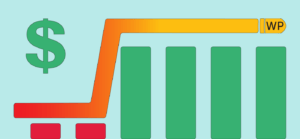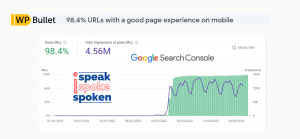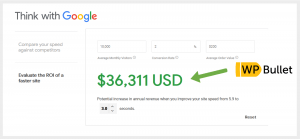These no longer exist for WordPress – at least not in Google PageSpeed scores for the majority of sites. Especially not for mobile scores.
Before the 2020 PageSpeed core web vitals update, there were some low-hanging fruit optimizations we could do to improve the scores.
This is no longer possible for most sites because of the algorithm update and new score calculations.
It is time to abandon the idea of low-hanging fruit site optimizations when it comes to Google PageSpeed.
The Low-Hanging Fruit Optimization Myth
In 2020, Google raised the bar for website performance. The cookie-cutter approach to optimization is nowhere near good enough anymore to please Google. Everybody has to step up their game and get their hands dirty. Adopt a performance strategy and mindset rather than using a checklist.
The standard optimizations for WordPress are what we call site-independent optimizations.
The site-independent optimizations are the standard practices most plugins do like minifying assets, image optimization, deferring JavaScript, lazy loading, basic CDN and critical CSS integration. The problem is, these standard practices only help so much nowadays in 2020.
Clients who rely on just one plugin to help improve their PageSpeed scores now usually end up very disappointed that their performance goals are still very far out of reach.
For example I had a client who insisted I just ‘throw a bunch of optimizations’ at his site.
We executed these standard practices (page caching was already enabled at the server-level)
- Minification
- Image compression
- Lazy loading
- Defer JavaScript
- CDN configuration
- Critical CSS
His Google PageSpeed score went from 30 to 38 – he was very disappointed still have red scores 🙁 .
He was thoroughly warned it was unlikely to help much but we pressed on since he insisted.
He would have gotten much better results with a combination of site-dependent and site-independent performance optimization approaches.
Read about our Google PageSpeed optimization process if you want to see an approach with proven results.
Why You Need a Performance Strategy
The WP Bullet Google PageSpeed optimization approach focuses on both site-independent and site-dependent optimizations.
Site-dependent optimizations are the ones we tailor to your site’s unique configuration of theme, plugins, site design and functionality.
The site-dependent optimizations are where the needle on Google PageSpeed scores really begin to move like in our case studies.
Consider the low-hanging-fruit optimization myth for Google PageSpeed officially dispelled.
It is time to build websites with performance in mind, carefully choosing the features and components you put into your site or WooCommerce store.
I get users every day who followed 5 different blog posts or ‘getting started’ courses and are happy with their site’s look and feel. Then they run their site through Google PageSpeed Insights only to learn their scores are red and very low.
Understandably, they start to freak out because they feel like they have failed or wasted their time. Google hates their website and will never send them any organic traffic.
They then try to find a website optimizer to get 90+ Google PageSpeed scores only to learn that the theme or plugins they used impose a performance ceiling.
Sometimes, you have to rebuild your site before you can even begin to make the green PageSpeed scores a realistic possibility!
If you run ads there is still a chance to improve your PageSpeed scores with the right approach.
Speaking with a WordPress expert before embarking on your website building journey is one of the smartest decisions clients can make.
The amount of time and frustration you can save by speaking to a WordPress expert for even just 30 mins is one of the most valuable choices you can make when starting your online website life.
Book a consult or audit so you get started on the right path!



